Tracking customer and business-to-business developments is an essential part of business growth.
B2B companies must adapt to changing customer needs while addressing their own operational concerns. They should make informed decisions about the best tools to stay ahead of the curve and meet the needs of their target market. Understanding B2B consumer behavior and focusing on relevant trends can give companies a competitive advantage. Want to know which trends will transform your business? Keep reading for valuable insights.
In the B2B setting, businesses must not only solve their own operational concerns but also stay attuned to the ever-changing needs of other companies. They serve other businesses that are focused on productivity, return on investment, and costs. To be effective, B2B companies must make smart decisions about the tools they use to stay ahead of the curve, and allocate resources effectively to meet the needs of their target market. Additionally, by keeping an eye on consumer and B2B marketing trends, they can gain valuable insights into how customers may behave in the future, which can inform their B2B marketing strategies. This understanding of B2B consumer behavior allows companies to respond to customers’ needs and stay ahead of the competition. Want to know which B2B trends will shape the future of your business? Keep reading to find out.
1. Mobile Commerce
The use of mobile devices for buying and selling goods and services is driving the rapid growth of m-commerce. By 2022, m-commerce is projected to make up 41.6% of total e-commerce sales, and 44% by 2025. B2B buyers also play a significant role in this growth, with mobile app ordering in the B2B industry increasing 250% since the pandemic and accounting for 33% of total B2B e-commerce sales. The trend is expected to continue, with the North American B2B e-commerce market projected to reach $1.8 trillion by 2023. Many B2B businesses also see m-commerce as a key driver of their industry, with 78% believing it will play a major role in the future. Factors contributing to this trend include the increased availability of high-speed mobile internet, the use of smartphones and tablets as primary devices, and the rise of mobile payment platforms such as Apple Pay and Android Pay. M-commerce offers a faster and more convenient buying platform and is more secure than traditional methods. It allows businesses to conduct transactions anytime and anywhere, saving time and money and increasing efficiency.
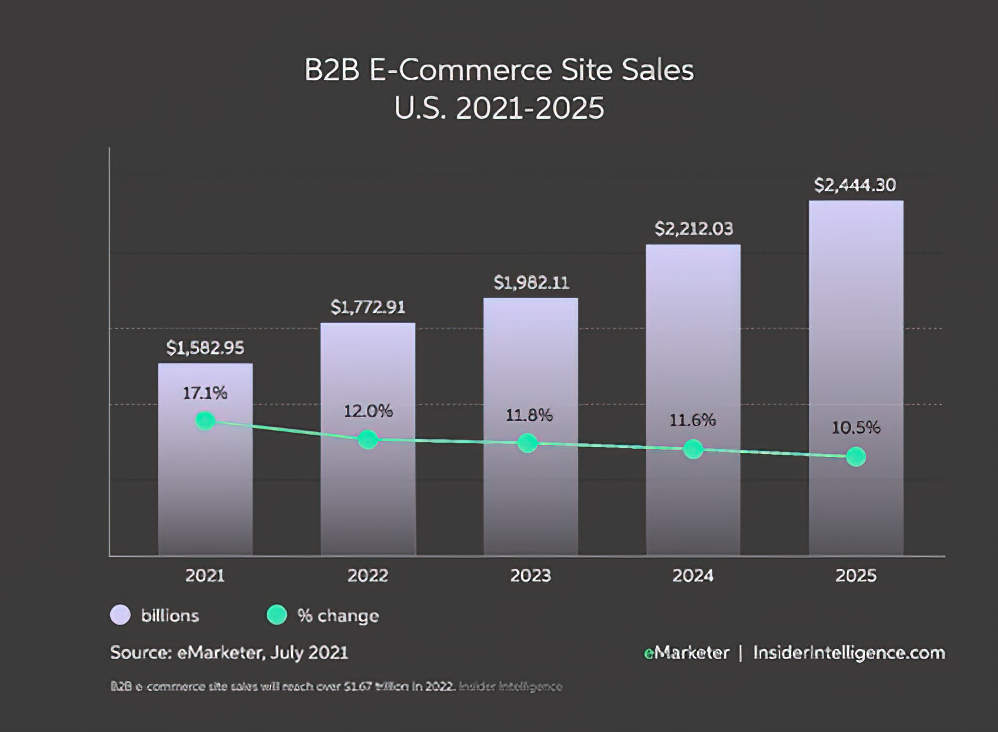
2. Word-of-mouth marketing
Customers are more likely to do business with a company they trust, and word-of-mouth marketing is key in building that trust. It allows businesses to connect with potential customers and create positive relationships. This aligns with HubSpot’s Flywheel model, where satisfied customers drive referrals. Businesses can speed up the flywheel by having
efficient processes, effective communication and providing excellent customer service. However, friction such as poor customer service can slow it down.
To boost word-of-mouth marketing, companies can focus on providing exceptional customer service, offering unique products or services, and building relationships with industry influencers. Word-of-mouth influences around 50% of all purchases, and even more in B2B space, as 91% of sales are driven by it. Many B2B marketers also find it effective in promoting live events, with 8% of them reporting positive results. Furthermore, for small businesses that use affiliate marketing, word-of-mouth is one of the most important traffic sources, accounting for 20% of their annual marketing budget.

3. Customer experience
Providing an excellent customer experience (CX) is a crucial trend in B2B. As customers are the backbone of any business, their satisfaction should be the top priority. Research shows that 73% of consumers consider CX as a vital factor in their purchasing decisions and 86% are willing to pay more for better CX. A positive customer experience can increase trust, brand loyalty, and drive value growth for the business. Happy customers are more likely to continue doing business with a company and recommend it to others, and it can help a business stand out from its competitors. On the other hand, companies that fail to satisfy their customers can face negative consequences. In the US, 59% of buyers will stop doing business with a company after multiple bad experiences and 17% after just one.
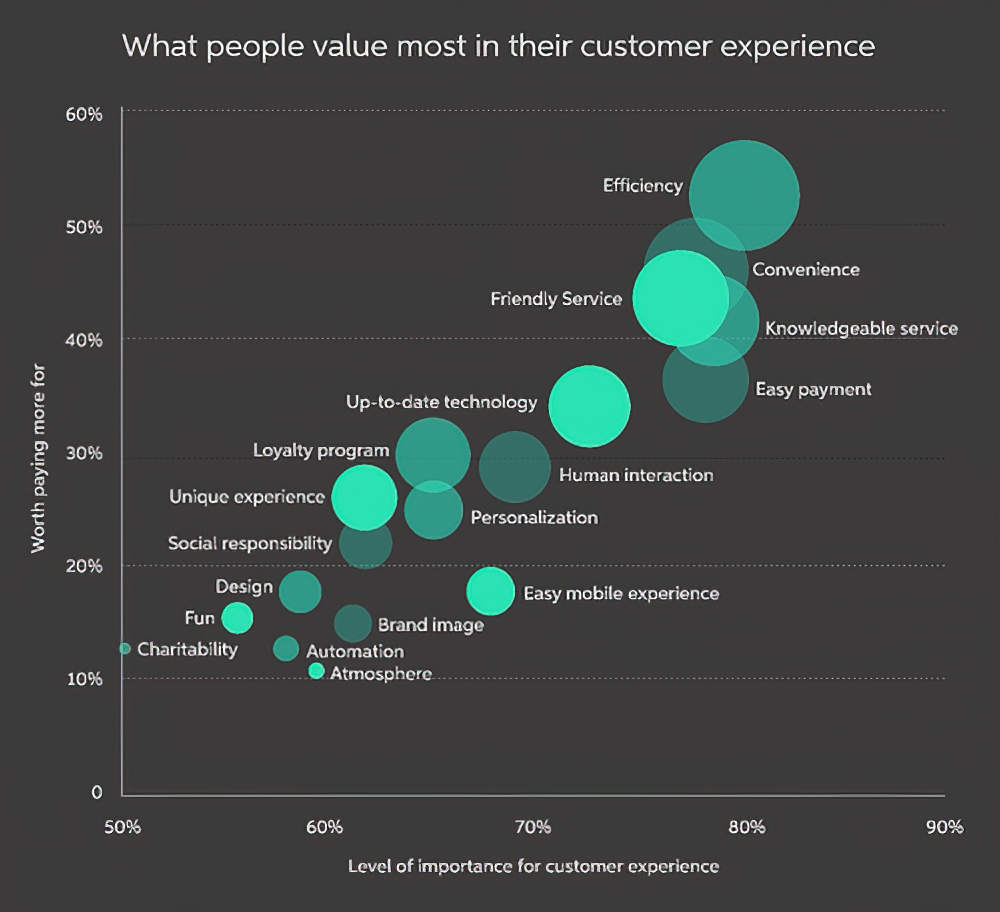
4. Content marketing
Current B2B trends indicate that buyers are becoming more comfortable with making purchase decisions without speaking to a sales representative, with 60% preferring to research first. To reach these self-directed buyers, B2B companies can use content marketing to position themselves as thought leaders and build trust with potential customers. According to Google Insights, digital content influences 67% of industrial manufacturing and pack-and-ship purchases. A Demand Metric report also shows that companies that create blog content can generate 67% more leads per month than those that don’t. Moreover, 90% of consumers find custom content useful. Not only does effective content marketing capture buyer interest, but it can also help businesses generate leads and drive sales, with companies that use it seeing six times higher conversion rates compared to those that don’t.
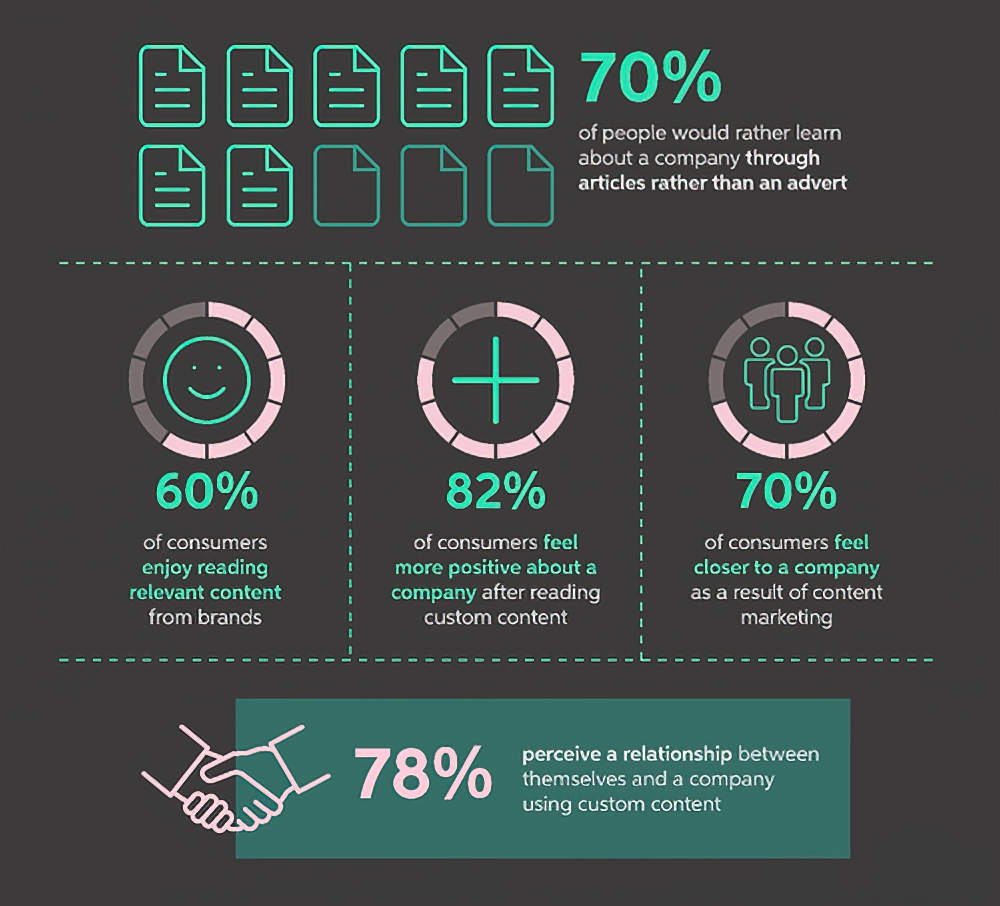
5. Social Media
Social media marketing is not just for B2C companies. Recent B2B trends show that it can also be beneficial in this space, as B2B companies can interact with their target customers on a more personal level. Many businesses already recognize its value, with 46% of B2B marketers using Facebook as part of their social media marketing strategy. According to HubSpot, incorporating a social channel into a company’s marketing plan can increase ROI and effectiveness by 35%. B2B companies can use social media to share their expertise with a larger audience, which can lead to attracting new leads and customers, as well as driving traffic to a company’s website or blog.
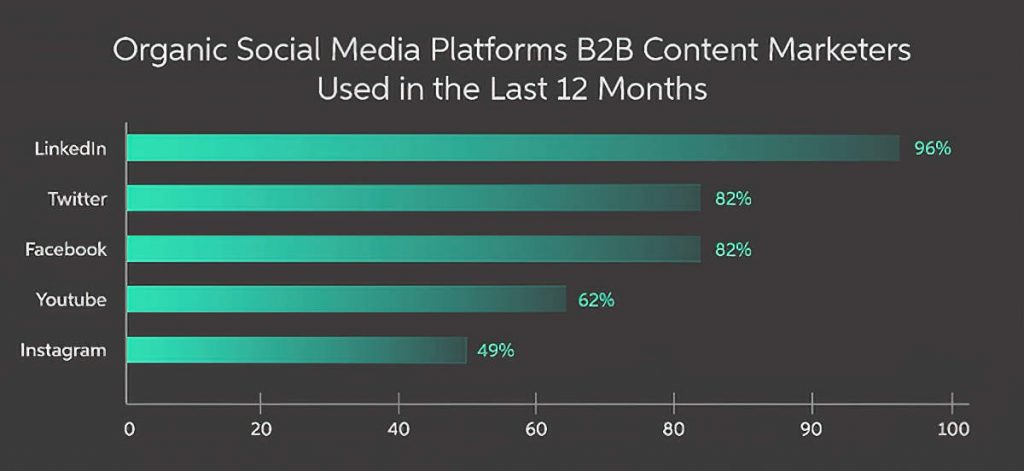
6. Influencer marketing
Research shows that influencer marketing is highly effective. According to a study by Tomoson, influencer marketing generates $6.50 for every $1 spent, with the top 13% earning $20 or more, while 70% make $2 or more. 51% of marketers believe they acquire better customers through influencer marketing. Similarly, a TopRank Marketing survey found that 86% of B2B brands are successful with influencer marketing, and reported 72% positive results including improved brand reputation, 70% better brand awareness, 56% new leads, and 33% direct revenue generation.
Today, there are several platforms that connect brands with influencers, making it easier to launch an influencer marketing campaign. As influencer marketing continues to be an important trend, B2B companies that embrace it will be well-positioned to win the trust of their customers and drive sales.
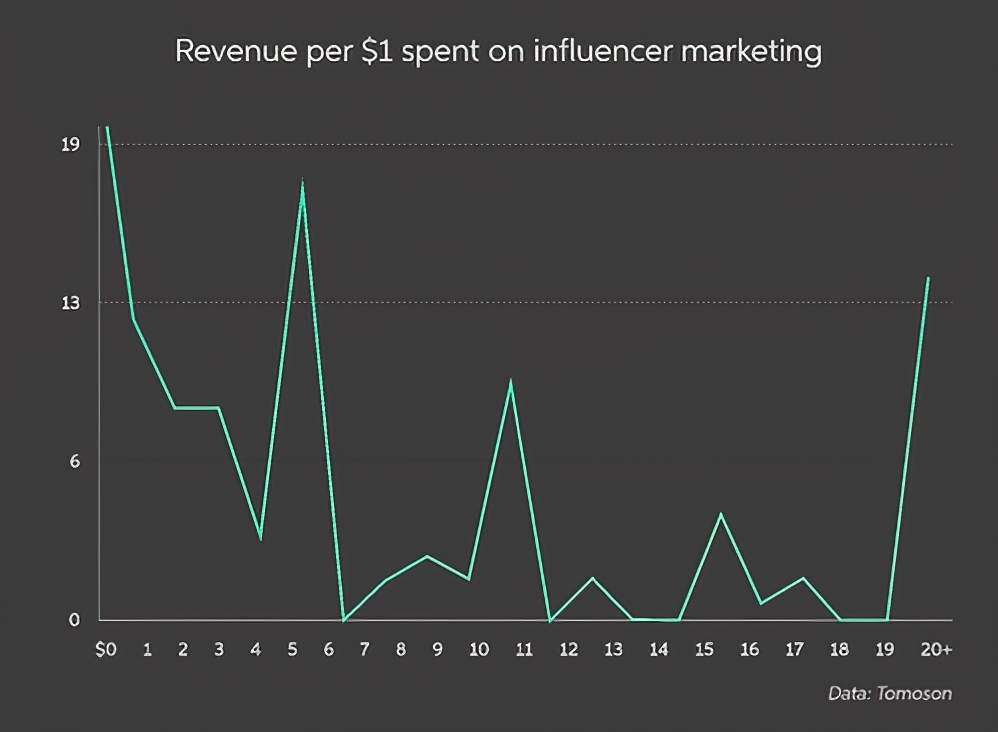
7. Account-based marketing
Account-based marketing (ABM) is a strategy that allows businesses to target and market to specific accounts, rather than just focusing on leads. This approach enables companies to center their resources on a smaller group of high-value accounts and customize their efforts to fit the specific needs of each account, resulting in more relevant and targeted messages. This enables businesses to build deeper relationships with their target accounts and focus on providing value to these high-value accounts. Today, companies spend an average of 29% of their marketing budget on ABM, and 94% of B2B marketers use it. Studies show that companies that use an ABM strategy increase their revenue by 208%, and 87% of B2B marketers confirm that ABM initiatives outperform other marketing investments in terms of ROI. Additionally, 62% of B2B marketers can see a positive impact after implementing an ABM strategy, according to a separate study.

8. Omni channel marketing
Omni-channel marketing is a crucial trend as it allows businesses to connect with customers across various platforms, including in-store, websites, social media, and email. This is important in today’s world as people frequently move between different channels, and a business that is not present in these channels risks missing out on sales opportunities. According to a Harvard Business Review report, B2B buyers now use an average of 10 channels, an increase from previous years. Additionally, 94% of respondents believe that the Omni-channel sales model is more effective than previous models. A McKinsey report also found that B2B selling has undergone significant changes, with 94% of respondents believing that the current Omni-channel reality of customers buying both online and in-person is more practical and effective than older sales models that only used one channel.

9. Artificial intelligence in marketing
Artificial intelligence (AI) is a vital trend in B2B marketing as it has the ability to automate repetitive tasks, personalize messaging, and increase the efficiency of business operations. A growing number of B2B businesses are expressing interest in utilizing AI in their operations. According to a study by AI Multiple, 63% of B2B marketers want to use AI to identify industry trends and patterns.
For those B2B marketers already using AI, the benefits are clear. 64% of them say that AI is helping to improve their sales and marketing strategies. Additionally, a Gartner report found that 84% of digital marketing leaders believe that using AI/ML improves their ability to provide real-time, personalized experiences to customers.
AI in marketing has the potential to help businesses save time, money, and resources by automating tasks such as data analysis, targeting and segmentation, and customer segmentation and personalization. Additionally, AI can assist in identifying and forecasting trends and patterns, allowing businesses to stay ahead of the curve and make data-driven decisions. Furthermore, AI can also help in predicting customer behaviour and preferences, helping businesses to personalize marketing messages and improve customer engagement. Overall, with the help of AI, businesses can increase their scalability and competitiveness in the market.

10. Subscription-based models
The subscription-based model is becoming a prevalent trend in both consumer and B2B markets, particularly in the software and technology industries. This shift is driven by several factors. For businesses, subscriptions provide a predictable and stable source of revenue, while also catering to customers’ desire to access products and services without making a large initial investment.
The growth of the subscription model has also led to an increase in demand for subscription billing management platforms. According to Zion Market Research, the subscription and billing management market was valued at $3.8 billion in 2018 and is projected to reach $10.5 billion by 2025.
Many businesses believe that this trend will continue in the future. According to a report from Manifesto Growth Architect, 70% of business leaders see subscription-based models as essential for their future success. Subscriptions can also help businesses establish stronger customer relationships by enabling them to scale their operations more effectively and affordably. Additionally, it can provide a more flexible approach for the customers to test and use the product/service before committing to a long-term contract or investment.

We understand B2B Consumer Trends and Needs.
Staying up-to-date on consumer trends is crucial for B2B businesses looking to remain competitive and grow their customer base. At 3Diorama.com, we understand the importance of staying ahead of the curve and offer our clients the tools and resources they need to understand and capitalize on emerging trends.
Our team of experts works with your businesses to create the images you need to excel in the industry, providing valuable imagery that can be used to improve customer engagement and drive sales. We understand that every business is unique and tailor our approach to meet the specific needs of each client.

